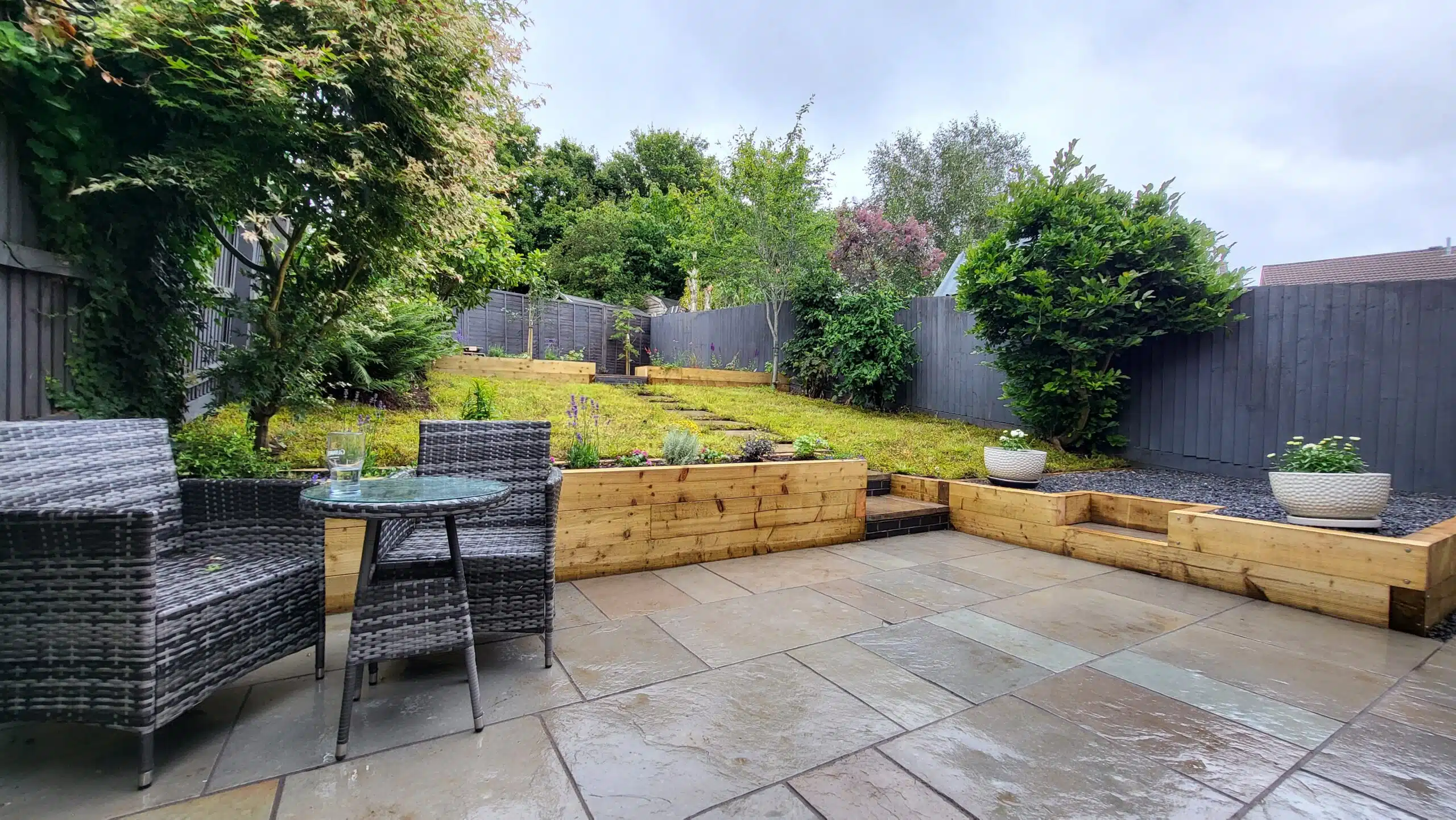
By using reclaimed landscaping materials that are saved from going to landfill sites, in turn this helps the environment. Aged brick, timber and stone can give your garden an instant established look, full of character and depth.

Think about combining reclaimed paving with pebbles, gravel and brick. Old scaffolding boards and wooden pallets can make great raised beds, decking, sheds or even garden furniture. Large rocks can be used around ponds, made into rockeries, or simply used as focal points jutting out of borders.

Visiting reclamation yards is such a joy. There is always something unique that can be used as a garden sculpture or statue. Old chimney pots make excellent planters. Pot them up with trailing or frothy plants such as tomatoes, strawberries, ivy, ferns, cranesbill geraniums, or a variety of summer annuals. Old roof tiles can be used for creating raised beds, and reclaimed bricks look warm and earthy for edging beautiful borders, or to create an interesting patio. Old sinks and troughs can be used for planting up herbs and alpines.

Perhaps you’ve had a good tidy in your garden this autumn, and have a variety of bits and bobs that you’re not sure what to do with? What about making a bug hotel? Old bits of tile and wood, broken terracotta pots and structural bricks with holes are perfect. You could even reuse roofing felt and chicken wire, or use garden mesh inside it. The more nooks and crannies the better. Creating habitats in your garden for beneficial predators is a must. It not only provides them with shelter and nourishment, but also allows them to prey on bugs that are eating your prized plants. Then there’s no need for pesticides.

Instead of buying new gravel, think about using a gravel replacement like crushed up seashells, which are organic waste from the shellfish industry. They offer excellent water retention if used as mulch, and their sharp edges will keep slugs and snails at bay. Recycled glass chips come in a variety of colours and could be used to top dress plants in pots, or for the gravel trap around the perimeter of your house.

Reclaimed flagstones are always fun to work with. Use their irregularities to create a living path, with plants creeping in and around the gaps and cracks. Blue Star Creeper is good for shady spots around a path and Breckland Thyme enjoys the sun. They both tolerate heavy foot traffic and will look beautiful winding their way along your path.







